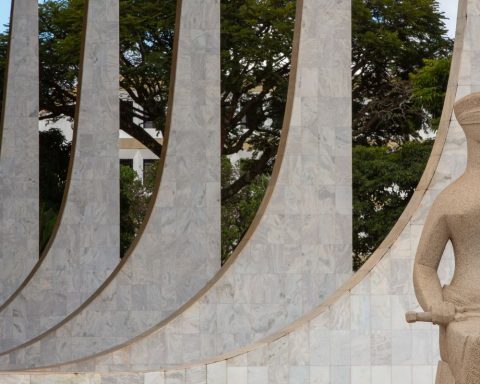The Brazilian Institute of Oil and Gas (IBP) reported this Monday (16) that oil is on track to close the year as the main product in Brazilian exports for the first time in the historical series that began in 1997.
Brazil exported US$42.8 billion of oil until November, ahead of soybeans and iron ore. According to IBP estimates, by the end of the year, oil should total US$47 billion in exports. Since 2016, the sector’s trade balance has shown a positive net balance.
According to IBP, the production projection for 2025 is 3.6 million barrels of oil per day (bpd). Currently, this production is 3.4 million barrels.
“This increase in production is the maturation of pre-salt investments, the entry of some FPSOs (floating production, storage and transfer units) into the pre-salt,” said the president of IBP, Roberto Ardenguy.
It is also estimated that almost R$600 billion in royaltiesspecial participations and commercialization of the Union’s oil with the sector over the next four years.
Brazil is the eighth largest oil producer in the world and the ninth largest in terms of refining facilities. The oil and gas sector represents 17% of the Brazilian industrial Domestic Product and provides 45% of the internal energy supply.
The country is the second world producer of biofuels, the eighth consumer market in the world, generating 1.6 million direct and indirect jobs.
Geopolitics will play a central role once again in 2025 in the discussion of energy flows.
“The wars and conflicts that have been happening, Ukraine, Russia, the conflicts in the Middle East, they directly influence these energy flows, imports and exports, all these dynamics”, said IBP technical analysis manager, Isabela Costa.
In the macroeconomic field, she highlights monitoring the evolution of indicators in the United States and China, the main consumers of oil.
Pellets and Equatorial Margin
The IBP highlighted the Pelotas Basin among the new exploration areas. The emerged part of the basin occupies approximately 40.9 thousand square kilometers (km²) of the states of Rio Grande do Sul and Santa Catarina. In Brazilian territory, the basin extends from the Alto de Florianópolis, to the north, the geological limit with the Santos Basin, to the geographic border with Uruguay, to the south.
Petrobras, in partnership with Shell, signed 26 concession contracts with the National Petroleum, Natural Gas and Biofuels Agency (ANP) to explore the basin. The consortium will be operated by Petrobras with a 70% stake and Shell with 30%, with an expected investment of R$1.5 billion.
The Equatorial Margin, which contains five sedimentary basins: Pará-Maranhão, Barreirinhas, Ceará and Potiguar, in addition to Foz do Amazonas, has the potential to add 1.106 million barrels of oil per day to national production from 2029 onwards.
















